Aluminum alloy die-casting products generally have surface treatments such as powder spraying, baking paint, oil spraying, oxidation, sandblasting, electroplating, etc. Classified based on the thickness and smoothness of the product surface treatment.
1. Powder spraying is the process of spraying powder coating onto the surface of a workpiece using a powder spraying equipment (electrostatic spraying machine). Under the action of static electricity, the powder will evenly adsorb onto the surface of the workpiece, forming a powdery coating. The powdery coating undergoes high-temperature baking, leveling, and solidification to form the final coating with different effects (different types of powder coatings); The spraying effect of powder spraying is superior to the spraying process in terms of mechanical strength, adhesion, corrosion resistance, aging resistance, etc., and the cost is also lower than that of the same spraying effect.
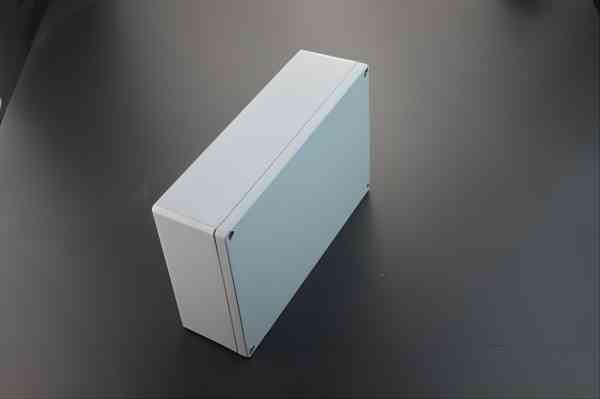
Powder spraying is generally divided into outdoor powder and indoor powder. The pattern can be adjusted into various effects, such as smooth surface, sand pattern, foaming, etc.
2. The true baking process is to use aluminum alloy phosphating and spraying, followed by baking. This coating not only has anti-corrosion properties, but also is bright, wear-resistant, and not easy to peel off
Surface pretreatment
(1) 1. Oil removal; 2. Water washing; 3. Rust removal; 4. Water washing; 5 meter adjustment; 6. Water washing; 7 phosphating; 8 Water washing; 9 Water washing; 10 Drying;
(2) Purpose and importance of pre-treatment:
The purpose of pre-treatment is to obtain a good coating. Due to the presence of grease, oxide scale, dust, rust, and corrosive substances on the surface of the stamping parts during manufacturing, processing, handling, and storage, if not removed, it will directly affect the performance and appearance of the coating film. Therefore, pre-treatment plays an extremely important role in the coating process.
(3) The significance of preprocessing:
Pre coating treatment, coating, and drying are the three main processes of the coating process. Among them, pre coating treatment is the basic process, which has a significant impact on the overall coating quality, coating service life, coating appearance, etc. After degreasing, rust removal, phosphating, and other processes, the surface of the workpiece is clean, uniform, and free of grease
3. Oil spray is the term for surface coating processing of industrial products. Oil spray processing is generally specialized in plastic oil spray, silk screen, and pad printing processing; Color modification and screen printing of EVA, rubber and other shoe materials. We have equipment such as spray lines, screen printing lines, and pad printing machines, and can produce products that are resistant to high temperatures, friction, UV, alcohol, and gasoline according to customer requirements. Processing scope: Electronic products: ordinary spray paint, PU paint, rubber paint (tactile paint), (such as USB drives, MP3 players, cameras, network peripheral products, and other electronic products.), can solve difficult problems encountered in spray injection molding processing, such as air marks, fusion joints, etc., has experience in spraying rubber paint (tactile paint), and possesses tactile paint rework technology.
4. Oxidation
Aluminum alloy surface oxidation is suitable for conducting oxidation, and aluminum materials or profiles are suitable for anodizing.
Aluminum alloy oxidation colors generally include natural color and sky blue
(1). Anodic oxidation is carried out under high voltage, which is an electrochemical reaction process; Conductive oxidation does not require electrification, but only immersion in medicinal solution. It is a pure chemical reaction.
(2). Anodizing takes a long time, often tens of minutes, while conductive oxidation only takes a few tens of seconds.
(3). The film generated by anodic oxidation ranges from several micrometers to tens of micrometers, and is hard and wear-resistant, while the film generated by conductive oxidation is only around 0.01-0.15 micrometers. The wear resistance is not very good, but it can conduct electricity and resist atmospheric corrosion, which is its advantage.
(4). The oxide film is originally non-conductive, but because the film generated by conductive oxidation is really thin, it is conductive
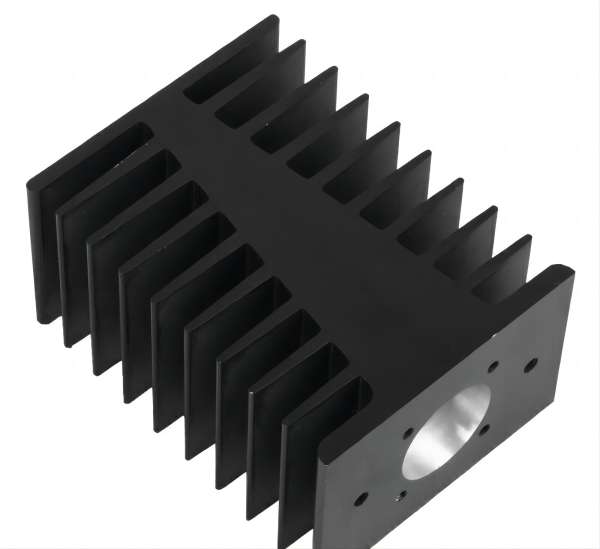
5. Sandblasting
Spraying a layer of fine sand on the surface of aluminum alloy products to enhance the friction coefficient of the contact surface can enhance the reliability of the connection. The sand has different thicknesses and patterns.
6. Electroplating
Electroplating is the process of using electrolysis to deposit metal or alloy on the surface of a workpiece, forming a uniform, dense, and well bonded metal layer, which is called electroplating. Simply understood, it is a change or combination of physics and chemistry. The application of electroplating technology is generally used for the following purposes: a. anti-corrosion b. protective decoration c. wear resistance
Aluminum alloy coating pre-treatment process:
1) Degreasing - water washing - water washing - surface adjustment - phosphating - water washing - (pure water washing), using zinc based phosphating solution, the method is basically the same as the phosphating of steel parts.
If not phosphated, hexavalent chromium passivation can also be used, but this method is not environmentally friendly. Or use trivalent chromium passivation treatment.
If aluminum alloy is only degreased and coated, the adhesion and corrosion resistance will be poor.
2) Phosphating treatment is a surface treatment technique in which the workpiece is immersed in a solution mainly composed of phosphoric acid or phosphate or sprayed with a spray gun to produce a complete phosphate protective film on the surface. The typical processing specifications are shown in Table 2. The film forming ability of phosphating treatment solution is not as good as that of chromium treatment solution, and it has high requirements for the surface quality of the workpiece. It is usually not suitable for surface treatment of thin-walled die castings with poor surface quality (wall thickness less than 2mm). The thickness of the phosphating treatment film is relatively large, and as the bottom layer of the paint, it can improve the adhesion, moisture resistance, and corrosion resistance of the paint film by tens to hundreds of times. There is relatively little research on magnesium alloy phosphating treatment, and its current application is very limited.
(1). The surface of die-casting aluminum alloy is electroplated with colored zinc. Aluminum itself is an amphoteric metal and is unstable in acidic or alkaline solutions. In addition, the structure of die-casting aluminum alloy itself is loose, with defects such as sand holes and pores, which often affect the electroplating quality. After appropriate pre-treatment, the electrogalvanizing of die-casting parts becomes easier. Electroplating a zinc layer of about 10um and then passivation treatment can greatly improve the corrosion resistance of die-casting aluminum alloys. To prevent discoloration of colored zinc, an organic protective film can be dipped and coated.
(2). The surface of die-casting aluminum alloy is subject to chromate treatment. After sand blasting, die-casting aluminum alloy can be directly subject to chromate treatment, so that a passivation film can be obtained on the surface. The film can be colorless to yellow as required, and does not affect the surface resistance. In order to meet the requirements of three proofing products, spraying can be carried out after chromate treatment.
Introduction to Types of Metal Surface Treatment
Electroplating/Electrophoresis/Zinc Plating/Blackening/Metal Surface Coloring/Shot Blasting/Sandblasting/Shot Peening/Phosphating/Passivation
Electroplated coated metal or other insoluble materials are used as anodes, and the workpiece to be plated is used as cathodes. The cations of the coated metal are reduced on the surface of the workpiece to form a coating. To eliminate interference from other cations and make the coating uniform and firm, it is necessary to use a solution containing the metal cations of the coating as the electroplating solution to maintain the concentration of the metal cations of the coating unchanged. The purpose of electroplating is to coat the substrate with a metal coating, changing the surface properties or dimensions of the substrate. Electroplating can enhance the corrosion resistance of metals (coated metals are mostly corrosion-resistant), increase hardness, prevent wear, improve conductivity, lubrication, heat resistance, and surface aesthetics.
Electrophoresis is the process of applying a voltage to the cathode of an electrophoretic coating at both the positive and negative poles, causing charged coating ions to move to the cathode and react with the alkaline surface of the cathode to form an insoluble substance, which is deposited on the surface of the workpiece. Characteristics of electrophoresis: Electrophoretic paint film has the advantages of full, uniform, flat, and smooth coating, and its hardness, adhesion, corrosion resistance, impact performance, and permeability are significantly better than other coating processes.
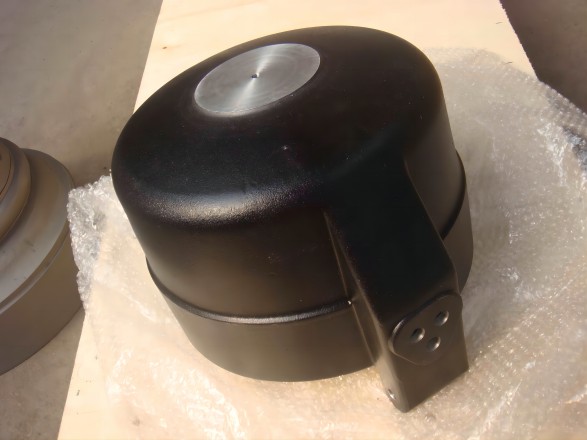
Galvanizing refers to the surface treatment technique of plating a layer of zinc on the surface of metals, alloys, or other materials for aesthetic and rust prevention purposes. The main method used now is hot-dip galvanizing.
The difference between electroplating and electrophoresis is the process of plating a thin layer of other metals or alloys on certain metal surfaces using the principle of electrolysis. Electrophoresis: The phenomenon of charged particles (ions) moving in a solution under an electric field. The phenomenon of charged particles (ions) moving in an electric field in a solution. The technology of using charged particles to move at different speeds in an electric field to achieve separation is called electrophoresis technology. Electrophoresis, also known as electrocautery, electrophoretic paint, and electrodeposition.
The surface blackening treatment of blackened steel parts is also known as bluening. The principle is to rapidly oxidize the surface of steel products, forming a dense oxide film protective layer, and improving the rust resistance of steel parts. The commonly used methods for blackening include traditional alkaline heating blackening and later room temperature blackening. But the room temperature blackening process is not very effective for low-carbon steel. It is better to use alkaline blackening for A3 steel. The ferric oxide produced by oxidation at high temperatures (about 550 ℃) is sky blue, hence it is called bluing treatment. The formation of ferric oxide at low temperatures (about 350 ℃) is dark black, hence it is called blackening treatment. In weapon manufacturing, the commonly used method is bluing; In industrial production, blackening treatment is commonly used.
Adopting alkaline oxidation method or acidic oxidation method; The process of forming an oxide film on the metal surface to prevent corrosion is called 'bluing'. The oxide film formed on the surface of black metal after "blueing" treatment, with the outer layer mainly composed of ferric oxide and the inner layer composed of ferrous oxide.
The operation process for blueing (blackening): workpiece clamping → degreasing → cleaning → acid washing → cleaning → oxidation → cleaning → saponification → hot water boiling and washing → inspection. The so-called saponification refers to soaking the workpiece in a soapy water solution at a certain temperature. The purpose is to form a layer of iron stearate film to improve the corrosion resistance of the workpiece. Metal surface coloring, as the name suggests, is to "paint" the metal surface with colors, changing its single, cold metal color and replacing it with colorful colors to meet the different needs of different industries. After coloring the metal, it generally increases its anti-corrosion ability, and some also increase its wear resistance. But the main application of surface color technology is still in the field of decoration, which is used to beautify life and society.
The principle of shot blasting is to use an electric motor to drive the impeller body to rotate (directly driven or driven by a V-belt), and rely on centrifugal force to throw balls with a diameter of about 0.2~3.0 (including cast steel balls, steel wire cutting balls, stainless steel balls, and other types) onto the surface of the workpiece, making the surface of the workpiece reach a certain roughness, making the workpiece beautiful, or changing the welding tensile stress of the workpiece to compressive stress, improving the service life of the workpiece. By improving the surface roughness of the workpiece, the adhesion of the paint film for subsequent painting of the workpiece is also improved.
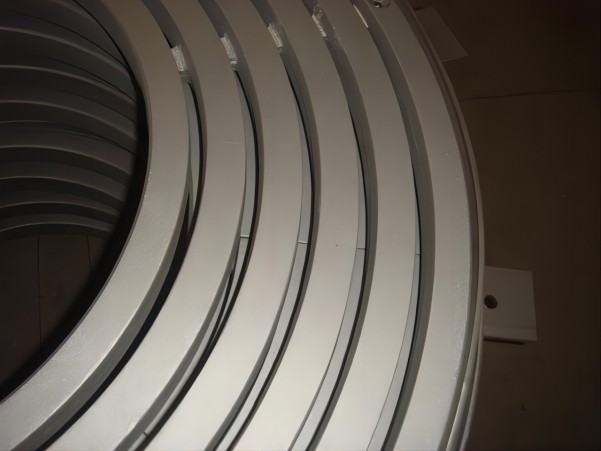
Sand blasting uses compressed air as the power to form a high-speed jet beam to spray materials (copper ore, quartz sand, carborundum suction sandblasting schematic diagram, iron sand, Hainan sand) to the surface of the workpiece to be treated at a high speed, so that the appearance or shape of the external surface of the workpiece surface changes. Due to the impact and cutting effects of abrasive on the workpiece surface, the workpiece surface can obtain a certain degree of cleanliness and different roughness, The mechanical properties of the workpiece surface are improved, thereby improving the fatigue resistance of the workpiece, increasing its adhesion to the coating, prolonging the durability of the coating film, and also facilitating the leveling and decoration of the coating.
Compared with other cleaning processes such as acid pickling and tool cleaning, sandblasting has the following characteristics:
1. Sandblasting is the most thorough, versatile, rapid, and efficient cleaning method.
2. Sandblasting treatment can be arbitrarily selected between different roughness levels, which cannot be achieved by other processes. Manual polishing can create rough surfaces but the speed is too slow, while chemical solvent cleaning can cause the surface to be too smooth, which is not conducive to coating adhesion.
The characteristics of shot peening: 1. It has great flexibility in cleaning. Easy to clean the inner and outer surfaces of complex workpieces and the inner walls of pipe fittings; And it is not limited by the site, and can be moved to the vicinity of oversized workpieces for cleaning. 2. The equipment has a simple structure, low investment in the entire machine, fewer vulnerable parts, and low maintenance costs. 3. It consumes a lot of energy and must be equipped with a high-power air compression station. 4. Cleaning the surface is prone to moisture and embroidery. 5. Low cleaning efficiency, many operators, and high labor intensity.
Characteristics of shot blasting: 1. Poor flexibility. Due to the limitations of the site, cleaning the workpiece may be somewhat blind, resulting in dead corners that cannot be cleaned on the inner surface of the workpiece. 2. There is no need to accelerate the projectile with compressed air and set up a high-power air compression station. 3. The cleaning surface is less prone to moisture and rust. 4. The equipment structure is relatively complex, with many vulnerable parts, especially blades and other parts, which require a lot of maintenance time and high costs. 5. High cleaning efficiency, low cost, few operators, easy to achieve automated control, suitable for mass production.
Shot peening. Surface treatment using shot peening has a high impact force and obvious cleaning effect. However, the treatment of thin sheet workpieces by shot peening can easily cause deformation of the workpiece, and the impact of steel balls on the surface of the workpiece (whether shot peening or shot peening) can cause deformation of the metal substrate. Due to the lack of plasticity of Fe3O4 and Fe2O3, they peel off after crushing, and the oil film deforms together with the substrate. Therefore, for workpieces with oil stains, shot peening and shot peening cannot completely remove oil stains. Among the existing surface treatment methods for workpieces, sandblasting cleaning has the best cleaning effect. Sandblasting is suitable for cleaning workpieces with high surface requirements. However, currently, the general sandblasting equipment in China is mostly composed of primitive heavy sand conveying machinery such as hinges, scrapers, and bucket elevators.
The difference between shot peening and shot blasting is that shot peening uses high-pressure air or compressed air as power, while shot peening generally involves high-speed rotation of a flywheel to eject steel sand at high speed. The shot blasting efficiency is high, but there will be dead corners, and the shot blasting is relatively flexible, but the power consumption is high. Although the two processes have different spraying power and methods, they both aim to impact the workpiece at high speed, and their effects are basically the same. Compared to shot blasting, shot blasting is more precise and easy to control accuracy, but its efficiency is not as high as shot blasting. It is suitable for small and complex shaped workpieces, and shot blasting is more economical and practical, easy to control efficiency and cost. It can control the particle size of the shot material to control the spraying effect, but there will be dead corners, making it suitable for batch processing of workpieces with a single surface The selection of two processes mainly depends on the shape of the workpiece and processing efficiency
The difference between shot peening and sandblasting is that both use high-pressure air or compressed air as power to blow it out at high speed and impact the surface of the workpiece to achieve cleaning effect. However, the effect varies depending on the medium chosen
After sandblasting treatment, the dirt on the surface of the workpiece is removed, and the surface of the workpiece is slightly damaged, resulting in a significant increase in surface area, thereby increasing the bonding strength between the workpiece and the coating/coating The surface of the workpiece after sandblasting treatment is metallic in its natural color, but due to its rough surface, light is refracted off, resulting in no metallic luster and a dark surface After shot peening treatment, the dirt on the surface of the workpiece is removed, and the surface of the workpiece is minimally damaged, resulting in an increase in surface area. Due to the fact that the surface of the workpiece is not damaged during the processing, the excess energy generated during processing will lead to surface strengthening of the workpiece substrate The surface of the workpiece after sandblasting treatment is also metallic in its natural color, but due to its spherical shape, some of the light is refracted, resulting in a matte effect when processing the workpiece
Phosphorylation is a process of chemical and electrochemical reactions to form a phosphate chemical conversion film, which is called a phosphating film. The main purpose of phosphating is to provide protection for the base metal and to some extent prevent metal corrosion; Used for priming before painting to improve the adhesion and corrosion resistance of the paint film layer; Used for friction reduction and lubrication in metal cold working processes.
The mechanism of passivation can be explained by thin film theory, which suggests that passivation is due to the interaction between metal and oxidation properties, resulting in the formation of a very thin, dense, well covered, and firmly adsorbed passivation film on the metal surface. This layer of film exists as an independent phase, usually a compound of oxidized metals. It plays a role in completely separating the metal from the corrosive medium, preventing the metal from coming into contact with the corrosive medium, thereby basically stopping the dissolution of the metal and forming a passive state to achieve anti-corrosion effect.
Advantages of passivation
1. Compared with the traditional physical sealing method, the passivation treatment has the characteristic of absolutely not increasing the thickness of the workpiece and changing the color, improving the precision and added value of the product, making the operation more convenient;
2. Due to the non reactive nature of the passivation process, the passivation agent can be repeatedly added and used, resulting in a longer lifespan and more economical cost.
3. Passivation promotes the formation of oxygen molecular structure passivation film on the metal surface, which is compact and stable in performance, and has self repairing effect in the air at the same time. Therefore, compared with the traditional method of coating antirust oil, the passivation film formed by passivation is more stable and corrosion resistant.
Passivation refers to the phenomenon that the chemical stability of a metal or alloy is significantly enhanced due to some factors. The phenomenon of metal passivation caused by certain passivating agents (chemicals) is called chemical passivation. Oxidants such as concentrated HNO3, concentrated H2SO4, HClO3, K2Cr2O7, KMnO4, etc. can all passivate metals. After metal passivation, its electrode potential moves in the positive direction, causing it to lose its original characteristics, such as the passivated iron cannot replace copper in copper salts. In addition, electrochemical methods can also be used to passivate metals, such as placing Fe in an H2SO4 solution as the anode, polarizing the anode with an applied current, and using a certain instrument to increase the iron potential to a certain extent, Fe is passivated. The phenomenon of metal passivation caused by anodic polarization is called anodic passivation or electrochemical passivation.
Spraying utilizes pressure or electrostatic force to attach paint or powder to the surface of the workpiece, providing anti-corrosion and decorative effects on the appearance of the workpiece.
Baking paint is applied with primer and topcoat on the substrate, and each coat of paint is sent to a dust-free constant temperature baking room for baking.
Infiltration is a microporous (fine seam) penetration sealing process. The sealing medium (usually a low viscosity liquid) is infiltrated into the micropores (fine seams) through natural infiltration (i.e. microporous self suction), vacuum extraction, and pressure, filling the gaps. Then, the sealing medium in the gaps is solidified through natural (room temperature), cooling, or heating methods to achieve the effect of sealing the gaps.
Spray oil onto the surface of the product by natural air drying.
Polishing is the process of modifying the surface of a workpiece using flexible polishing tools and abrasive particles or other polishing media. Polishing cannot improve the dimensional or geometric accuracy of the workpiece, but rather aims to obtain a smooth surface or mirror gloss, sometimes used to eliminate gloss (extinction). Usually, polishing wheels are used as polishing tools. The polishing wheel is generally made by stacking multiple layers of canvas, felt, or leather, with metal circular plates clamped on both sides. The rim of the wheel is coated with a polishing agent composed of a uniform mixture of micro abrasive and grease. During polishing, a high-speed rotating polishing wheel (with a circumferential speed of more than 20 meters/second) presses against the workpiece, causing the abrasive to roll and perform micro cutting on the surface of the workpiece, thereby obtaining a bright machining surface. The surface roughness can generally reach Ra0.63-0.01 micrometers; When using a non greasy matte polishing agent, it can dull the bright surface to improve its appearance. When there is a slightly lower requirement for the surface of the product, drum polishing is often used. During rough polishing, a large amount of abrasive and product are placed in a can shaped drum. When the drum rotates, the product and abrasive are randomly rolled and collided within the drum to remove surface protrusions and reduce surface roughness.
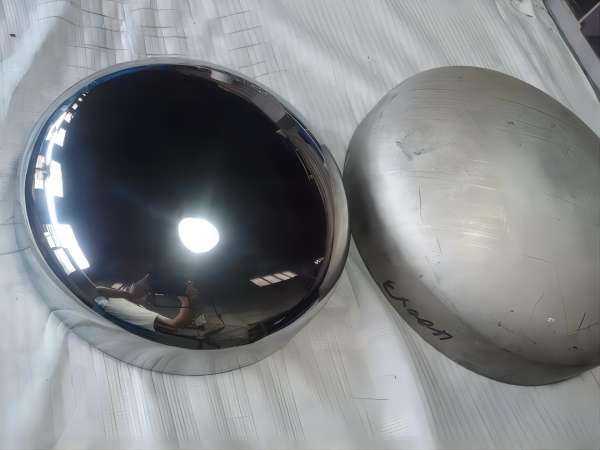
Ultrasonic cleaning utilizes the cavitation, acceleration, and direct inflow effects of ultrasound in liquids to directly and indirectly disperse, emulsify, and peel off the dirt layer, achieving the cleaning purpose.
6. Surface treatment methods for aluminum and aluminum alloys
(Method 1) Degreasing treatment. Wipe with solvent dampened with absorbent cotton, remove oil stains, and then wipe several times with a clean cotton cloth. Commonly used solvents include trichloroethylene, ethyl acetate, acetone, butanone, and gasoline.
(Method 2) Degrease and chemically treat in the following solution: concentrated sulfuric acid 27.3, potassium dichromate 7.5, water 65.2, soak at 60-65 ° C for 10-30 minutes, then remove and rinse with water, air dry or dry below 80 ° C; Alternatively, wash in the following solution before drying: phosphoric acid 10, n-butanol 3, water 20. This method is suitable for phenolic nylon adhesive and has a good effect
(Method 3) Degrease and chemically treat in the following solution: ammonium bifluoride 3-3.5, chromium oxide 20-26, sodium phosphate 2-2.5, concentrated sulfuric acid 50-60, boric acid 0.4-0.6, water 1000, soak at 25-40 ° C for 4.5-6min, then wash and dry. This method has a high bonding strength and can be bonded within 4 hours after treatment. It is suitable for epoxy adhesive and epoxy nitrile adhesive bonding.
(Method 4) Degrease and chemically treat in the following solution: phosphate 7.5, chromium oxide 7.5, alcohol 5.0, formaldehyde (36 38%) 80, soak at 15-30 ° C for 10-15 minutes, then wash and dry in water at 60-80 ° C.
(Method 5) After degreasing, anodize in the following solution: immerse 22g/l of concentrated sulfuric acid at a DC strength of 1-1.5A/dm2 for 10-15 minutes, then immerse in a saturated potassium dichromate solution at 95-100 ° C for 5-20 minutes, then wash with water and dry.
(Method 6) Degrease and chemically treat in the following solution: potassium dichromate 66 sulfuric acid (96%) 666 water 1000, soak at 70 ° C for 10 minutes, then wash with water and dry.
(Method 7) Degrease and chemically treat in the following solution: nitric acid (d=1.41), 3 hydrofluoric acid (42%), 1 soak at 20 ° C for 3 seconds, rinse with cold water, then wash with hot water at 65 ° C, rinse with distilled water, and dry. This method is suitable for cast aluminum alloys with high copper content.
(Method 8) After sandblasting or polishing, anodize in the following solution: chromium oxide, 100 sulfuric acid, 0.2 sodium chloride, 0.2 at 40 ° C, increase the voltage from 0V to 10V within 10 minutes, maintain it for 20 minutes, and then increase it from 10V to 50V within 5 minutes, maintain it for 5 minutes, then wash with water and dry it at 700C. Note: The concentration of free chromium oxide should not exceed 30-35g/l.
(Method 9) Degrease and chemically treat in the following solution: Soak in sodium silicate 10 non ionic scale remover 0.1 at 65 ° C for 5 minutes, then wash with water below 65 ° C, then wash with distilled water and dry. Suitable for bonding aluminum foil.
(Method 10) After degreasing, chemically treat in the following solution: sodium fluoride 1, concentrated nitric acid 15, water 84, soak at room temperature for 1 minute, wash with water, and then treat in the following solution: concentrated sulfuric acid 30, sodium dichromate 7.5, water 62.5, soak at room temperature for 1 minute, wash with water, and dry.
ZheJiang Dongrun Casting Industry Co,.Ltd was built in 1995, We have been in the casting industry for more than 25 years. No matter what type of molding you need done, we are the right supplier for your jobs. Unlike other of our competition, we offer four types of castings.
Dongrun Casting have 20000 square meters facility houses and 200 production & test equipment, From quotation and tooling design to casting and finished machining, we can work with you at every stage. We serves wide range of industries-from Fortune 500 corporations to small and midsize OEMs. Our products includes:
❖ HVAC | ❖ Architectural parts |
Browse our online showroom to see what we can do for you. And then E-mail:dongrun@dongruncasting.com us your specifications or inquiries today
